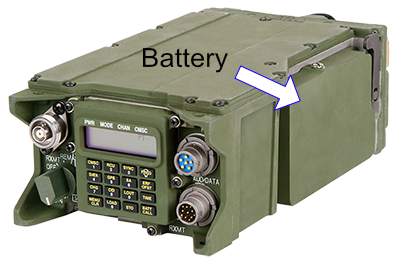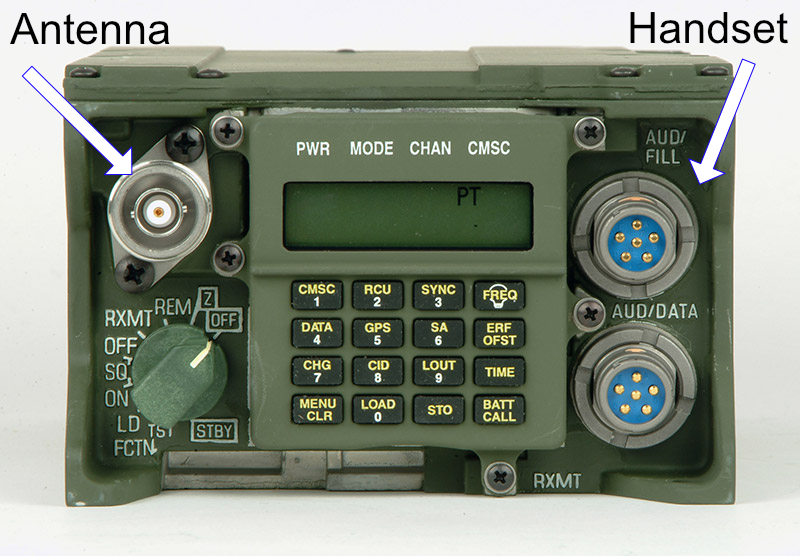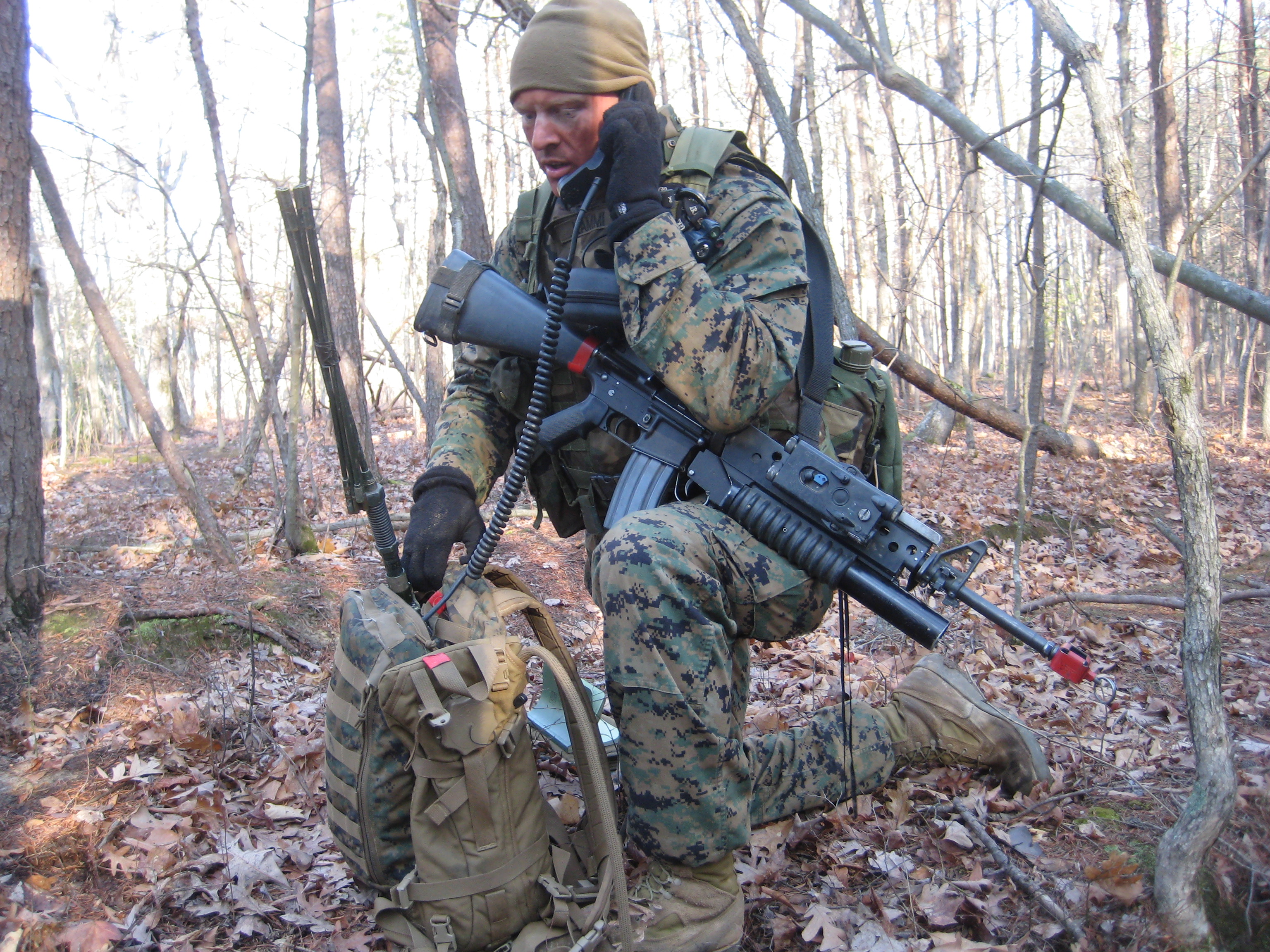Warrior Task - Radios
These things are so heavy!
References: TM 11-5820-890-10-6 | FM 6-02.72 | GTA 07-71-001

Enter: SINCGARS
The radio of choice for the army is the SINCGARS radio, that stands for Single Channel Ground and Airborne Radio System, That’s quite a mouthful so we just say “Radio” or “ASIP” (Advanced System Improvement Program). These things weight around 8 pounds and are a pain to lug around, you would think it would make more sense if we used walkie talkies but apparently these radios have special tech thus making them bulky.
Radio Etiquette
There is a proper and improper way of using the radio. Don’t just get on the net and start saying random stuff. Communication on the net is supposed to be orderly and structured to minimize instances of miscommunication. While there is some sort of “script” you have to follow, you don’t have to get all tactical and speak in a “Military way”. The main idea is to get your point across however that may be.
Callsigns
A callsign is a name that is used whenever you speak on the net. for example: If you are acting PL in a mission you would say: “Hey __ this is 1-6” instead of “Hey __ this is Zarco”.
the “1” usually indicates platoon so, if you are 1st platoon PL, your call sign would be 1-6, if you are 2nd platoon PL your call sign would be 2-6 and so on.
the “6” indicates your role. in this case 6 means PL or the OIC (Officer in Charge)
Here is a list of callsigns you would typically use
- 1-6: PL
- 1-7: PSG
- 1-1: 1st SL
- 1-2: 2nd SL
- 1-3: 3rd SL
- 1-4: 4th SL
- 1-6R: RTO
- 1-7M: Medic
- 1-6 Actual: PL
- Main: HQ (Person you report to)
Note
callsigns can differ depending on what unit you are in, but this is the typical setup for our purposes.
Let’s say you are 1st squad leader and you want to get ahold of the PSG, then you would simply say: “1-7 this is 1-1 over”
the format is: (Person you are calling) this is (you)
Phonetic Numbers
Getting your message across is key whenever it comes to communication. There can be some misunderstanding when it comes to number communication (think 15 vs 50). To minimize misunderstanding, everyone has adopted a streamlined way of pronouncing numbers it is as follows:
- 1 - “Wun”
- 2 - “Too”
- 3 - “Tree”
- 4 - “Fower”
- 5 - “Fife”
- 6 - “Six”
- 7 - “Seven”
- 8 - “Ait”
- 9 - “Niner”
- 0 - “Zero”
EG 3233 4432 -> “Echo Golf Tree Too Tree Tree Fower Fower Tree Too”
As you can see, some of the numbers are pronounced differently over the net. Another important thing to keep in mind is that whenever you use numbers you don’t just say the number as a whole, rather you break it down into smaller pieces. For example, instead of saying “Five Hundred and Twenty Four” you would say: “Fife Two Four”. This is especially critical Whenever you communicate coordinates you don’t want to send fires to the wrong coordinates and blowing yourself up.
Communication
Okay, now let’s talk on how to actually use this thing. Whenever you pick up the radio, think of it as if you are making a phone call.
Let’s make a “Phone call”
Hey 1-6 this is 1-4
You wait for a bit, and if everything goes right you get a reply they “Pick up the phone”
1-4 this is 1-6
Okay! now we can tell 1-6 (the PL) that 4th squad is emplaced in their fighting positions
1-6 this is 1-4, 4th squad is emplaced and ready for action, over
Notice the “Over” I placed at the end, “over” at the end of a transmission indicates that the transmission is complete and is awaiting response from the listener It’s what keeps the conversation going
The PL replies
1-4 this is 1-6, Roger that, out
Now we have “Out” at the end. “out” indicates that the transmission is done and to not say anything back sort of like hanging up the phone. The person initiating the conversation is usually the one who “outs” out. Also, you should not say “Over, out”. You only use 1, wether it be “over” or “out” at the end of the transmission
Warning
Never “out” your superiors or commanders.
Positive Words
These indicate the receipt or acknowledgement of information. “Hey! i hear you” or “I got what you said”
- Acknowledge
- Roger
- WILCO(Will Comply)
Important
Do not say “Good Copy” this is only used in the case where you shared some information (like coordinates) and want them to be read back to confirm accuracy
Negative Words
These usually indicate a need for correction on the info transmitted
- Negative
- Correction
BREAK
“Break” is sort of like a separator. Whenever you are transmitting super long info and need some time to recollect your thought then you would say “Break” at the end of a transmission. A good example would be a MEDEVAC request where you separate each line with “Break”
I Repeat
Warning
NEVER say “I Repeat” in a radio transmission (Unless you are in a fire mission). “Repeat” is normally used in fire missions to repeat a volley of artillery fire, There is a slight chance you might get blown up. If you want to reiterate info use the term “Say Again”
Out copy and Good Copy
Both of these terms are often widely misused. Think of “How copy” like a request to read back what someone has told you or sent. “Good copy” is confirmation that you have received and read back the correct information. Here is a sample script:
- Suppose someone reads you a grid: “EG 3233 4432 How copy over.”
- Now read back the grid: “Roger I copy EG 3223 4432, over”
- “Good copy, out”
- If you jotted the wrong info you will get back the following “Correction, Grid is EG 3233 4432 How copy, over”
Radio Check
Here a simple script on how to perform a radio check
- 1-7 this is 1-6 Radio check over
- 1-6 this is 1-7 I hear you over
- 1-7 this is 1-6 roger out
Important
Radio checks are a must before each mission. Not having operational radios only makes things more difficult.
Radio Hardware
The radio is composed of 4 parts. The radio itself, battery, antenna and Handset


It’s a little finicky to setup but it’s not that bad. Battery goes in the battery compartment. Antenna screws in to the socket. The biggest pain point is connecting the handset as you have to align the pins and then turn the cable in order to connect.
Warning
Do not spit on the connector as that causes corrosion if you need lubrication, use chapstick instead.
Setting It Up
There are a lot of buttons and features on the radio, but the good news is that you won’t use most of them. The SINCGARS radio is capable of a lot but you don’t need to know all that (for now) For our purposes, the radio will be setup in PT (Plain Text) SC (Single Channel) mode.
Text instructions in case you don’t like videos
- Turn the bottom left dial to “LD”
- Wait until you hear a “EEEEE” sound
- Press the Menu button until you reach the “MODE” screen
- Press the CHG button and switch to “PT”
- Press the Menu button again, you will reach the “COMSEC” screen
- Press the CHG button and switch to “SC”
- Press the FREQ button and then the CLR button
- Use the numbers to type in your frequency ex: 55000
- Press the STO button to store the frequency
- Turn bottom left dial to ON, your radio is good to go!
- When not in use, make sure to turn OFF the radio to conserve battery life.
Common Issues
“I can’t hear the other person”
First make sure the frequency is set properly, if that doesn’t work ensure that the antenna is set in place. The antennas need a line of sight for proper transmission so try to be in open areas
“The radio won’t turn on”
Ensure that the battery is in place and has a charge. Try swapping the battery and see if it powers on
Closing
Taking on the radio might seem a bit scary at first but the most important thing is that you get your point across whenever you use it. You don’t have to use military lingo talk in a way that makes you feel comfortable so you can minimize errors.
Caution
Radios are considered SI… DON’T LOSE IT or you will have a bad day.
During lanes make sure the radio is with you at all times, and make sure you can hear it. You can use the elastic band from your red lens to position the headset close to your ear. I recommend using an Assault Pack to carry your radio. you can also attach the assault pack to your ruck for easy handling (Although It’s a bit heavy so watch out)
The antenna should be fully extended and pointed up for good signal. I’ve personally been through a lot of missions that have gone wrong simply because the radios weren’t working properly. so make sure to do those radio checks and have a PACE plan in case the radios magically stop working. When doing radio checks make sure there is some distance between radios to confirm that the antennas are operational
